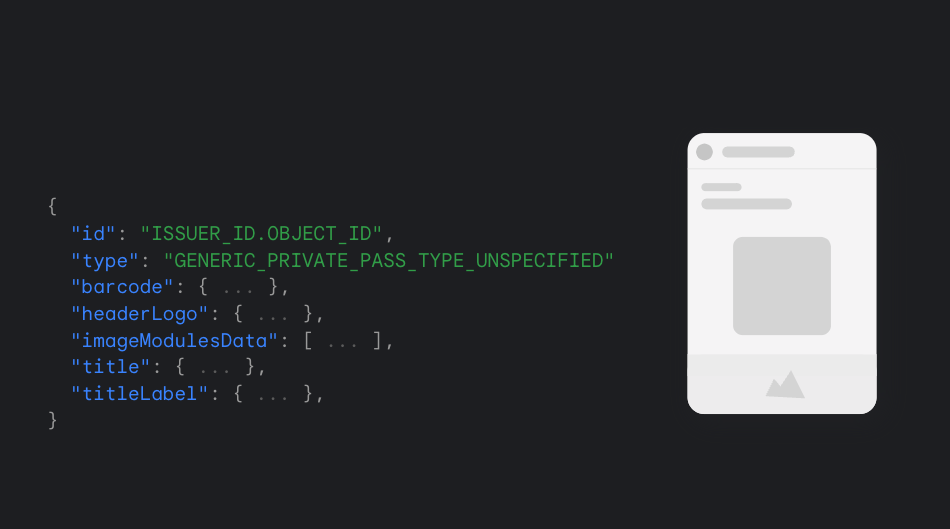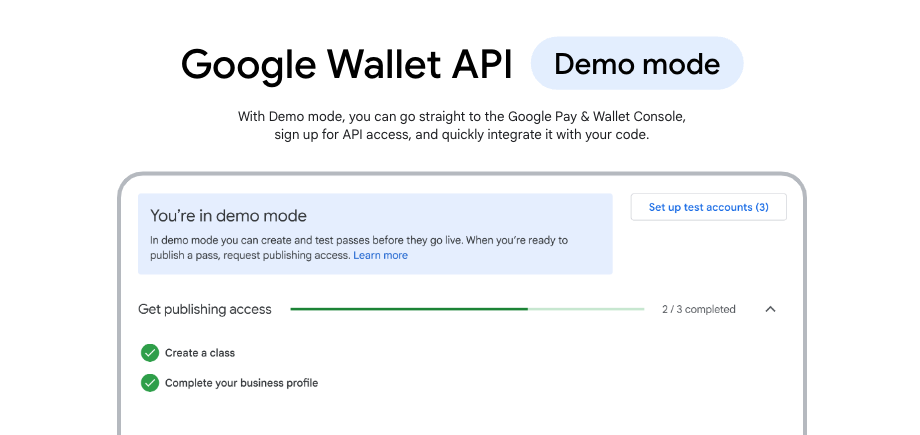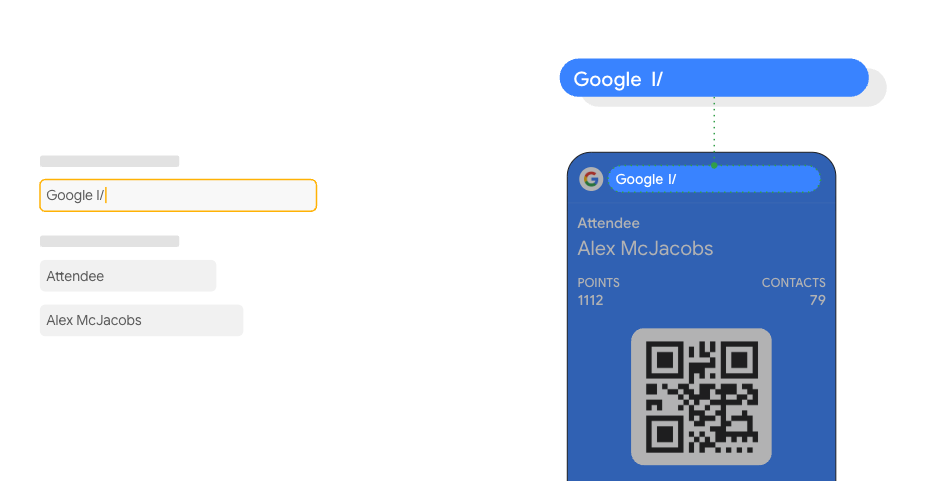
During Google I/O 2023, and in our recent blog post, we shared some new pass types and features we’re adding to Google Wallet and discussed how you can use them to build and protect your passes more easily, and enhance the experience for your customers.
Read on for a summary of what we covered during the event, or check out the recording of our session on YouTube: What's new in Google Pay and Google Wallet.
We’re glad to expand Generic Passes, adding support for sensitive data with the new generic private pass API. Generic private passes on Google Wallet are one more way we’re protecting users’ information, keeping their sensitive digital items safe. These types of passes require you to verify it’s you to view private passes. To do that, they can use the fingerprint sensor, a passcode, or other authentication methods. This is helpful when you create a pass with sensitive information, for example in the healthcare industry.
The Google Wallet Developer Documentation contains detailed steps to help you add a private pass to Google Wallet.

With Demo mode, you can go to the Google Pay & Wallet Console, sign up for API access, and integrate it with your code immediately after following the prerequisites available in the Google Wallet developer documentation.
When you sign up for a Google Wallet Issuer account for the first time, your account is automatically in Demo Mode. Demo mode includes the same features and functionality as publishing mode. To better differentiate between the demo and publish environments, passes created by issuers in Demo Mode contain visual elements to indicate their test nature. This distinction is removed when the issuer is approved to operate in publishing mode.
When you’re done with your tests and you’re ready to start issuing passes to your users, complete your business information and request publishing access from the Wallet API section in the console. Our console team will get in touch via email with additional instructions.

We are increasing the security of your passes with the introduction of a new API to rotate barcodes. With rotating barcodes you can pre-create a batch of barcodes and sync them with Google Wallet. The barcodes you create will rotate at a predefined interval and will be shown and updated in your user’s wallet. Rotating barcodes enable a range of use cases where issuers need to protect their passes, such as long duration transit tickets, events tickets, and more.
We’ve also announced Account Restricted passes, a new feature that lets issuers associate some pass objects with Google accounts. To use this feature, simply include the user’s email address in the pass object when you issue the pass. This triggers an additional check when a user attempts to add the pass to Google Wallet, which only succeeds if the email address specified in the pass matches the account of the currently logged-in user. Account Restricted passes let you protect your passes from theft, reselling, transfer or other restricted uses.
Making your passes consistent with your brand and design guidelines is a process that requires becoming acquainted with the Google Wallet API. During last year’s Google I/O, we introduced a dynamic template that accepts configuration to generate an approximate preview of your pass.
This year, we introduced the new generation of this tool, and graduate it into a fully functional pass builder. You can now configure and style your passes using a real-time preview to help you understand how passes are styled, and connect each visual element with their respective property in the API. The new pass builder also generates classes and objects in JSON format that you can use to make calls directly against the API, making it easier to configure your passes and removing the visual uncertainty of working with text-based configuration to style your passes. The new pass builder is available today for generic passes, tickets and pass types under retail.

Take a look at the documentation to start integrating Google Wallet today.
Learn more about the integration by taking a look at our sample source application in GitHub.
When you are ready, head over to the Google Pay & Wallet console and submit your integration for production access.
Shortly after Google I/O we announced 5 new ways to add more to Google Wallet. One of them is to save your ID to Google Wallet. And soon, you’ll be able to accept IDs from Google Wallet to securely and seamlessly verify a person's information. Some use cases include:
If you’re interested in using Google Wallet's in-app verification APIs, please fill out this form.